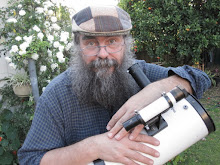Tuesday, December 03, 2024
Thursday December 5 to Thursday December 12
The First Quarter Moon is Monday December 8. There is an opportunity to see the Lunar X in daytime. In the evening Venus leaves Sagittarius behind and is coming closer to Saturn. Saturn is close to the first quarter Moon and there is a daytime occultation of Saturn as seen from Darwin. Jupiter is now visible in the evening sky along with Saturn and Venus and is at opposition on the 8th. In the morning Mars and Jupiter continue to draw apart. Mars remains within a binocular distance of the Beehive cluster.
The First Quarter Moon is Monday December 8. The Moon is at perigee, when it is closest to the Earth, on the 12th.
Venus is readily visible for early twilight to when the sky is fully dark. Venus is leaving Sagittarius behind and is coming closer to Saturn, with the Moon between them.
The inset is the telescopic view of Venus at this time.
Similar views will be seen from the rest of Australia at the equivalent local time (90 minutes after sunset).
Similar views will be seen from the rest of Australia at roughly the equivalent local time (90 minutes after sunset).
Similar views will be seen from the rest of Australia at roughly the equivalent local time (60 minutes before sunrise).
Elsewhere in Australia will see a similar view at the equivalent time (90 minutes after sunset).
Mercury is lost in the twilight.
Venus climbs higher in the evening twilight and is readily visible in the evening twilight. Venus leaves Sagittarius behind and is coming closer to Saturn. On the 6th and 7th the waxing Moon is between Venus and Saturn.
Mars is rising in the morning sky and near Jupiter. The pair continue to draw apart as as Mars passes into Cancer. Mars is within binocular distance of the beehive on from December 8-14.
Jupiter is rising in the the evening sky when the sky is fully dark but is best in the morning. Jupiter is below the red star Aldebaran forming a line with Mars.
Saturn is lowering in the evening sky coming closer to Venus. Saturn is visible all night long. The Moon is close to Saturn on the 8th and there is a daytime ocultation seen from Darwin.
Star Map via Virtual sky. Use your mouse to scroll around and press 8 when your pointer is in the map to set to the current time.
Cloud cover predictions can be found at SkippySky.
Here is the near-real time satellite view of the clouds (day and night) http://satview.bom.gov.au/
Labels: weekly sky








 Click to read about or order
Click to read about or order Click to read about or order
Click to read about or order Click to read about or order
Click to read about or order Click to read about or order
Click to read about or order




